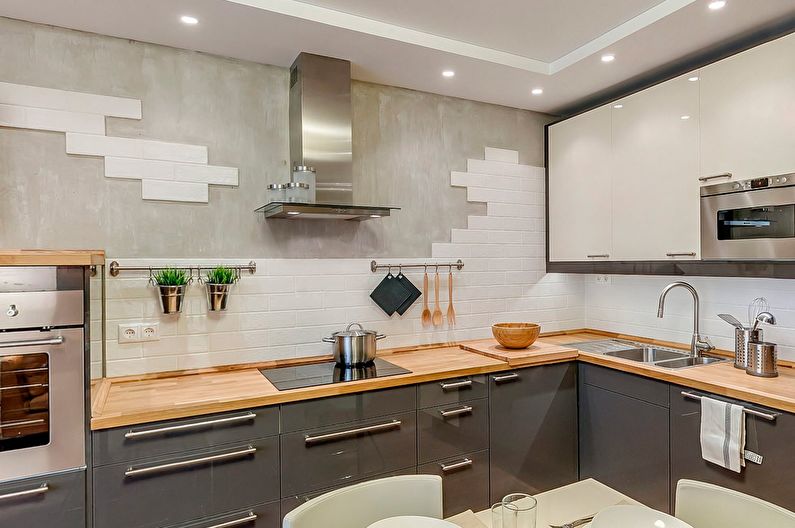
The kitchen is one of the most demanding rooms in the house due to high humidity, frequent temperature changes, soot, and splattering grease. Wall coverings are particularly at risk and even the most powerful extractors can’t always protect them. But what if you want to beautifully decorate the room? We offer you to get acquainted with the 10 best materials for finishing kitchen walls and choose the most optimal solution!
1. Ceramic Tile
Let’s start with the most popular finish option. Ceramic tiles are used in the design of many modern apartments, and for good reason: they are durable, resistant cladding with high decorative properties. They can withstand high temperatures, are resistant to moisture, as well as hot grease. It’s easy to care for tiles using cleaning products.
In addition, the material has an aesthetic appearance, a variety of color and texture solutions. It is perfect for the most dangerous area in the kitchen, where the stove is located. In the interior, it can be combined with other types of finishes, creating a harmonious composition.
When choosing ceramic tiles, note that they come in several types: smooth, textured, matte or glossy. This classification takes into account the visual aspect, without affecting the technical properties. In the kitchen interior, such cladding can become a bright accent, “reviving” even the most restrained design.
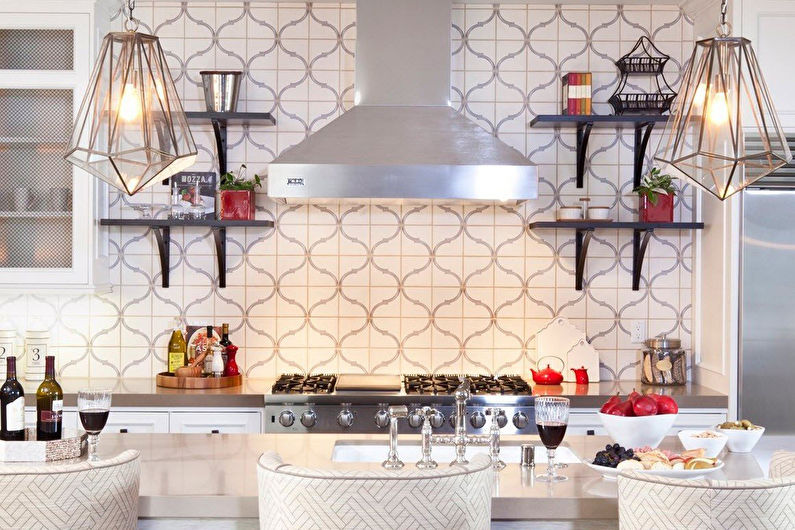
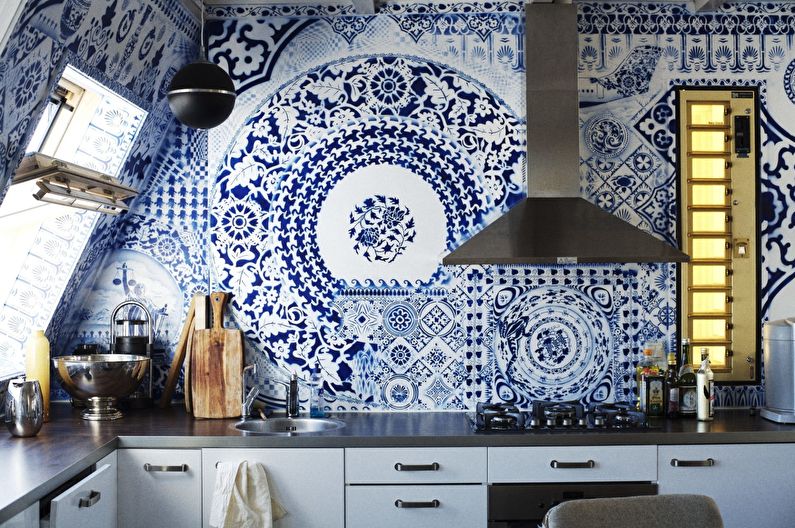
2. Wallpaper
A universal option for any interior. Only keep in mind that traditional paper wallpapers will not suit the kitchen due to their low resistance and relative short lifespan. Today you can find other, more advanced types that will not only heroically withstand any types of work in the kitchen space, but also help create a beautiful design.
Vinyl wallpapers cope well with their tasks. They are two-layer: the base is paper, which is covered with a layer of polyvinyl chloride. The latter element is what protects the walls from mechanical and chemical influences, as well as extends the service life.
Unlike vinyl, the basis of non-woven wallpaper is, accordingly, non-woven. They are able to hide wall irregularities and are often used for further painting. In terms of technical properties, they have much in common with the previous type, while being considered a more expensive option.
When choosing a type of wallpaper, base your decision on financial capabilities, design needs, and durability requirements. Regarding decorative properties – in the modern market you can find options of the most diverse colors, patterns, and textures.
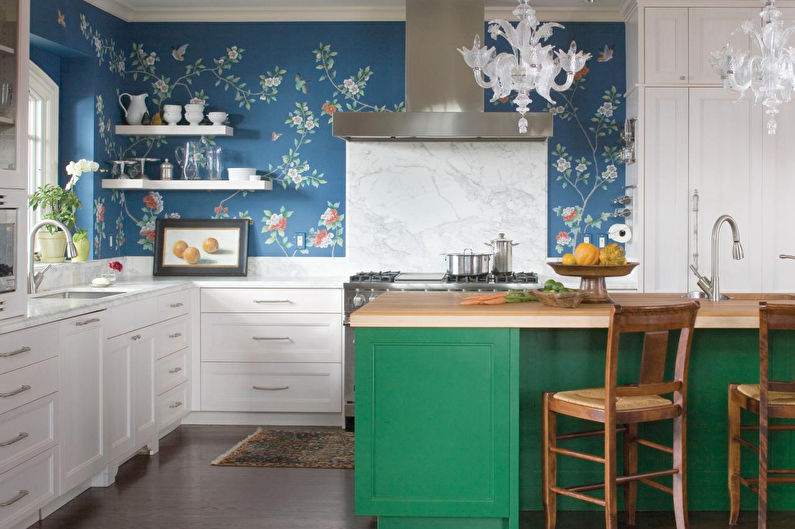
3. Paint
A budget-friendly, minimalist option capable of bringing a sense of cleanliness and harmony to a kitchen interior. All you need is paint and a perfectly smooth surface. The need for the latter can be considered a disadvantage, as this means that the walls require additional preparation. But if you have nothing to hide, then painting will be the perfect option.
Regular paint for finishing will not work – it is better to prefer moisture-resistant and washable options. Then the maintenance of the walls will not be problematic, and the durability of the coating will be an additional advantage.
Some might find that a monotonous wall covering looks boring and unattractive. Everything depends on the design of the kitchen: if your interior lacks bright accents, it is recommended to combine several colors, matte or glossy paint.
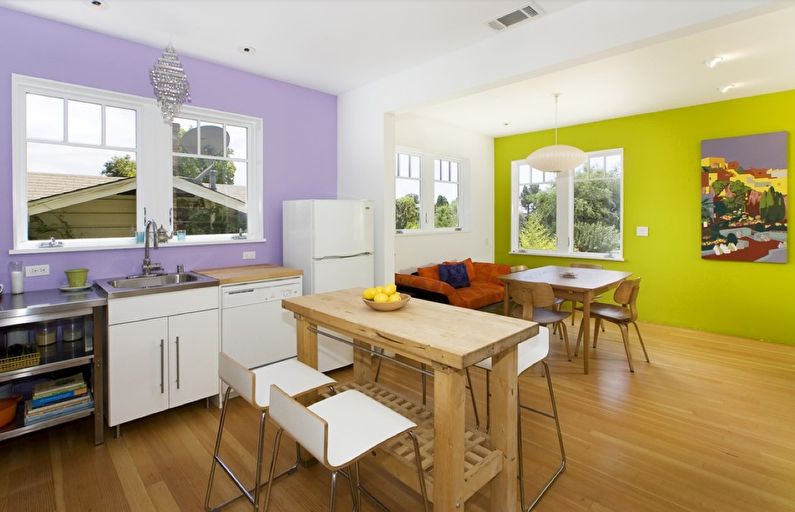
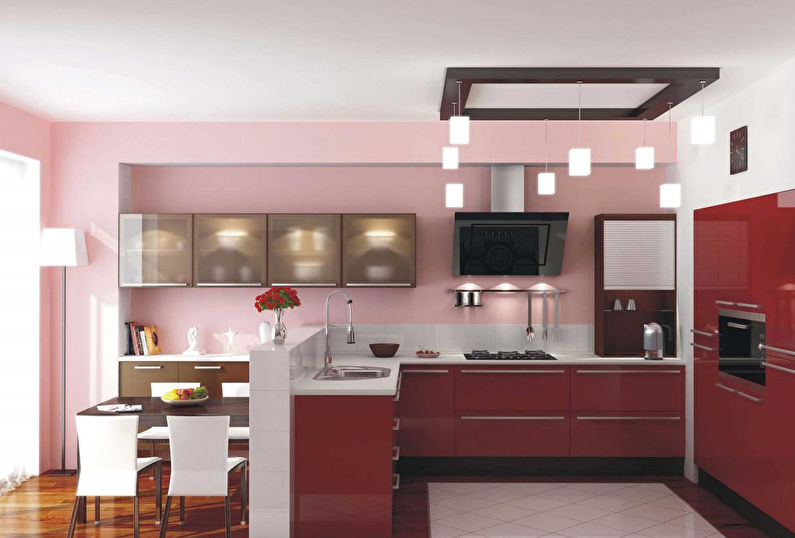
4. Decorative Plaster
Want to create a unique design in the kitchen? Decorative plaster is the perfect material for this purpose. Even if you try very hard, you are unlikely to be able to create two walls with the same texture – depending on the application, the pattern will vary.
Decorative plaster consists of various mixtures with binding substances. Therefore, there are many types, but only silicate and stone chip ones are suitable for the kitchen.
This finishing material hides wall defects but at the same time requires a perfectly smooth surface. It is durable, environmentally friendly, and very convenient to care for.
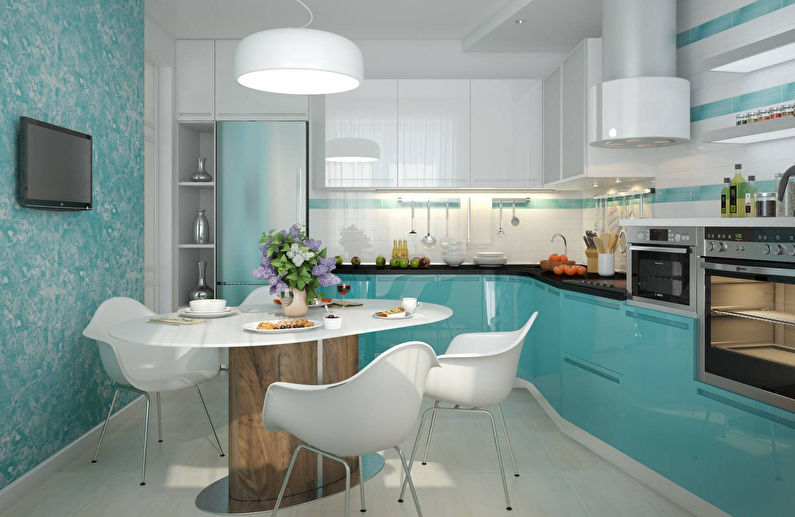
5. Panels
This type of finish is less popular, but is often used in cases where it is necessary to diversify the interior. The most common material is plastic, which is easy to install and inexpensive. Often combined with other finish options, as in some interiors solid walls with panels may look monotonous and boring. Nevertheless, they are well suited for the kitchen – thanks to resistance to moisture and various contaminants. The disadvantages can be considered the non-ecological nature of the material, as well as the short lifespan.
If you chose the country style for your kitchen, then it would be difficult to do without wooden panels. But this type of wall finish requires additional treatment to increase moisture resistance. Moreover, it is quite expensive, but these costs are worth the warmth and comfort that the texture of wood provides.

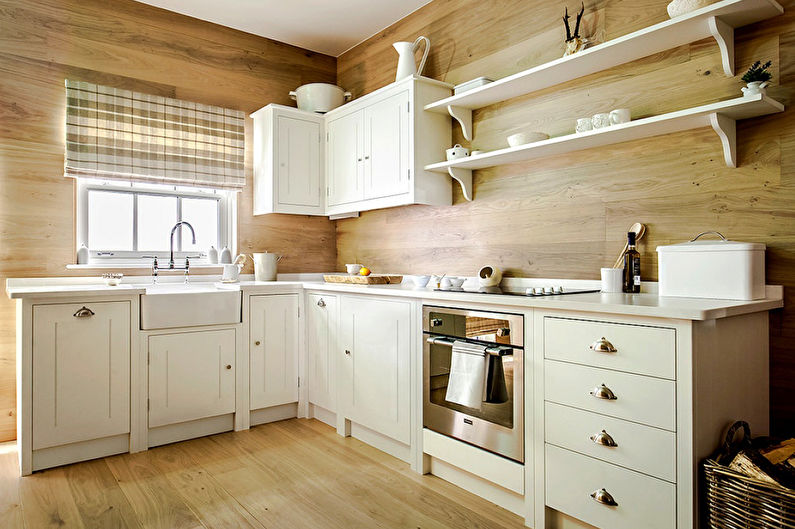
6. Decorative Stone
Bringing a bit of sophistication and exclusivity into the interior can be done with decorative or artificial stone. It differs from natural stone in its lightness, which is especially relevant for transportation, high strength, and resistance to external irritants. The material may include sand, concrete, clay, or even gypsum, making it quite eco-friendly. When choosing, preference should be given to water-resistant options, otherwise, a special protective coating will need to be used.
Decorative stone is best suited for spacious, bright kitchens, especially in combination with other finishes. Despite its “artificial” origin, the walls will look natural and original.
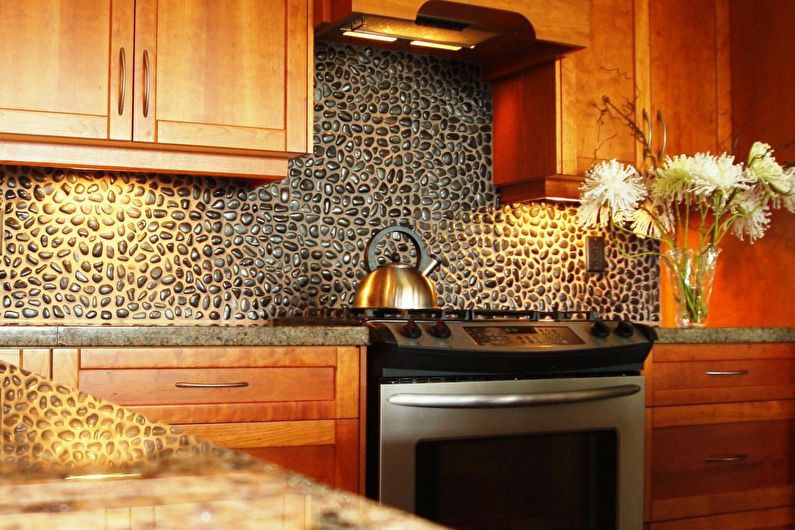
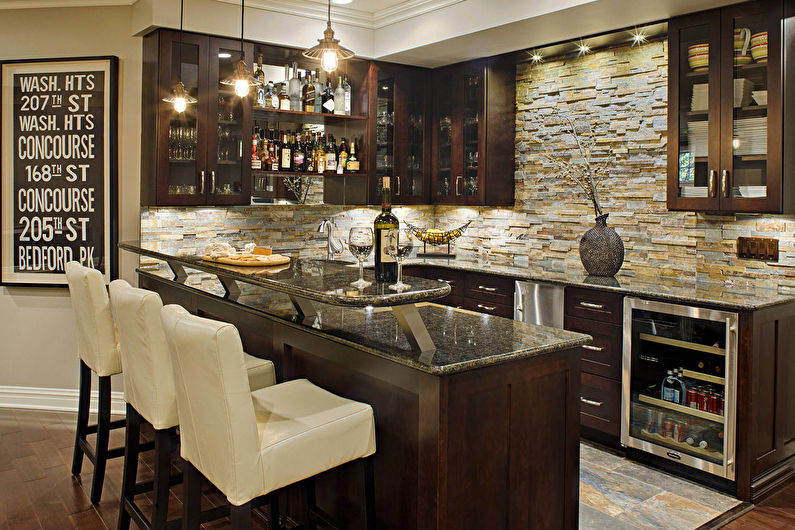
7. Brick
Brick walls are a key element of any loft design. But it can also serve as a rugged, fresh accent for other styles. Of course, a brick-like appearance can be created using panels or wallpaper. However, if you have a bare brick wall without plaster, consider yourself lucky.
This type of wall appeals due to the low cost of finishing and ease of creation. For the kitchen, it is better to treat the brickwork with special protective agents.
Like with decorative stone, brick looks more harmonious in larger spaces. At the same time, it can be combined with both dark and light tones in the interior.
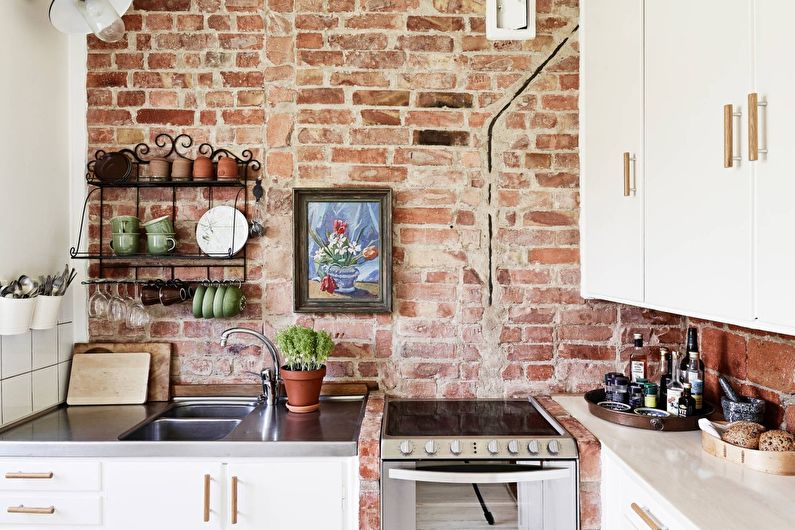
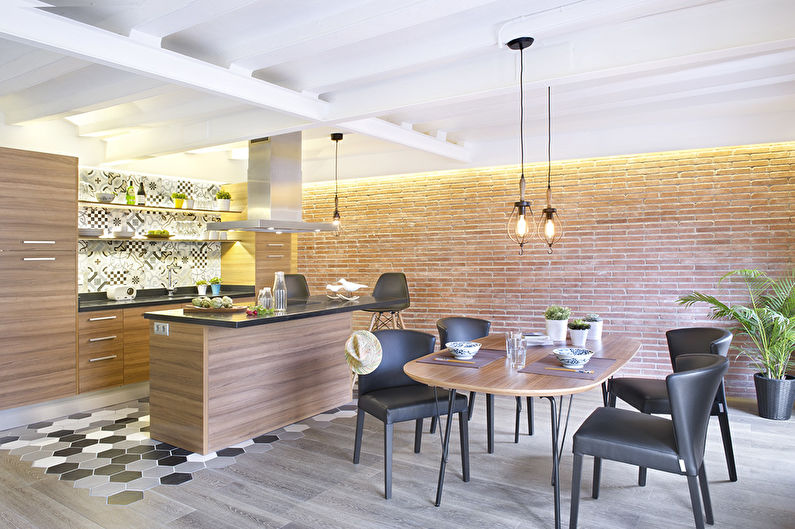
8. Cork Coverings
Let’s note right away that cork is likely more suitable for the dining area than for the working area. It is not very strong, has low resistance to mechanical damage, and does not have a long lifespan. However, modern protective sprays, powerful exhaust hoods, and simple care can mitigate these disadvantages.
Cork coverings attract with their variability, beautiful texture, and interesting laying techniques. For example, there are cork tiles, wallpaper, or even liquid cork. This is a natural material that will help create comfort in the kitchen interior, saving considerable funds at the same time.
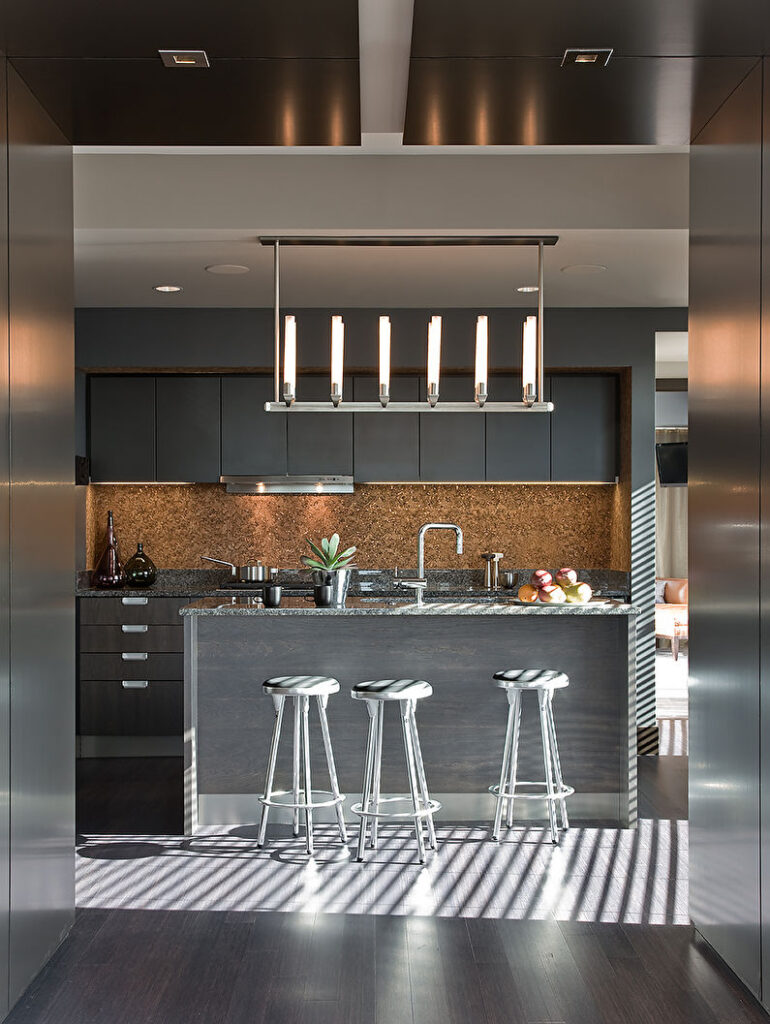
9. Marble
This material for kitchen wall finishes can definitely not be called cheap. Marble is rightfully considered an elite stone, suitable for luxurious or minimalist interiors. It has a beautiful natural texture, noble gloss, and a wide variety of shades. It is suitable both for the kitchen backsplash and other areas.
Marble surfaces are quite convenient to use. They are resistant to stains, temperature changes, and are easy to care for. It can be confidently said that these are walls for centuries – you definitely won’t have to worry about the lifespan.
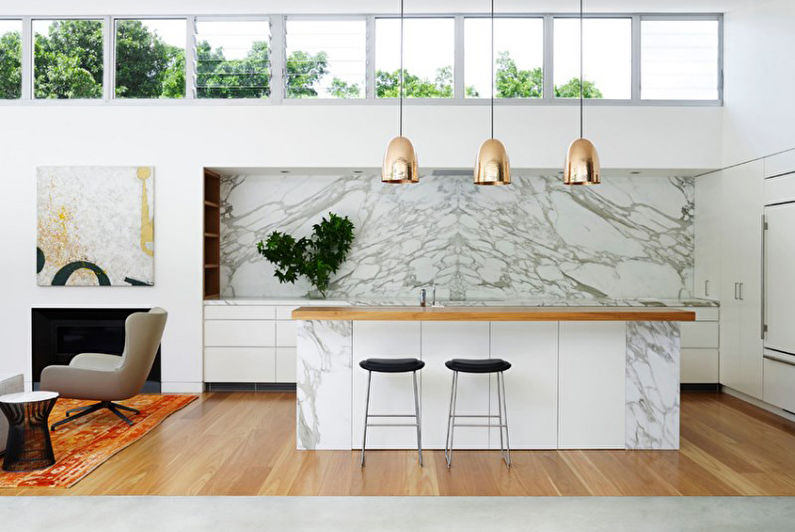
10. Glass
And finally, the most unusual material that is best suited for a kitchen backsplash. It is not afraid of moisture and high temperature fluctuations. Some may say that grease or fingerprints are more visible on such surfaces. In fact, there are as many traces as on ceramic tiles, but it is much easier to care for glass.
Tempered glass is recommended – it is stronger and safer than regular glass, and it is simply indispensable in the working area. In addition to technical properties, decorative ones should be noted. Apart from clear glass, modern market offers surfaces with photo printing, drawings on film, or simply painted ones. There are many design options. The main thing is to skillfully integrate it into the interior.

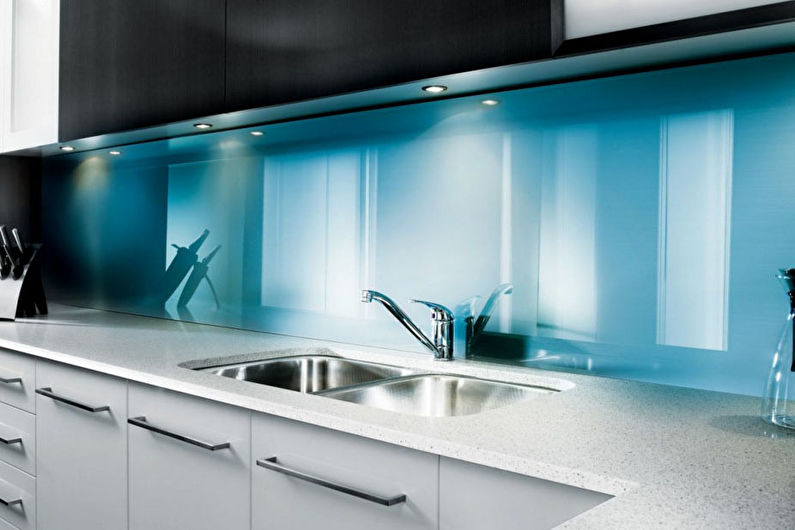

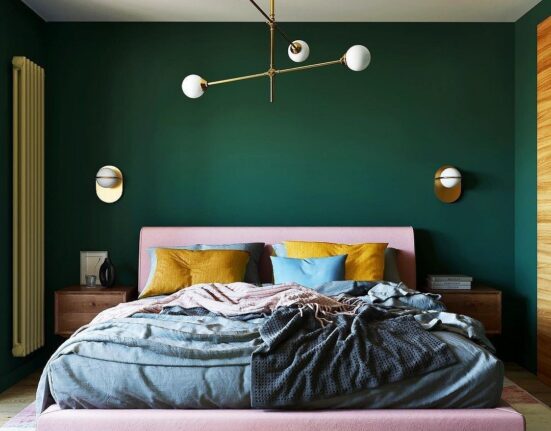

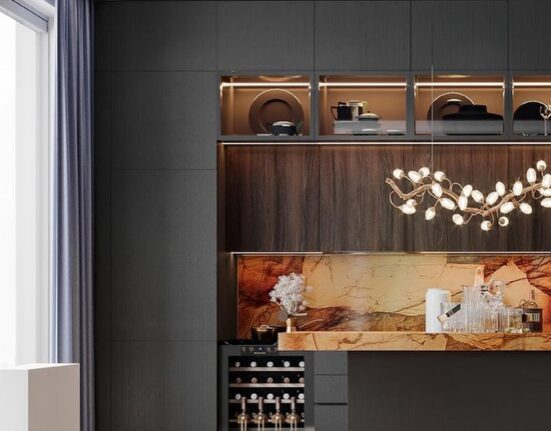
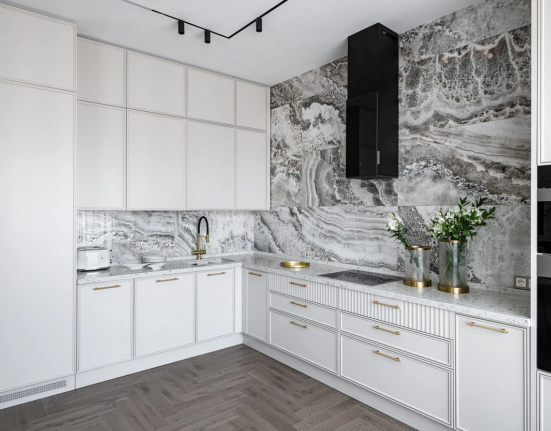
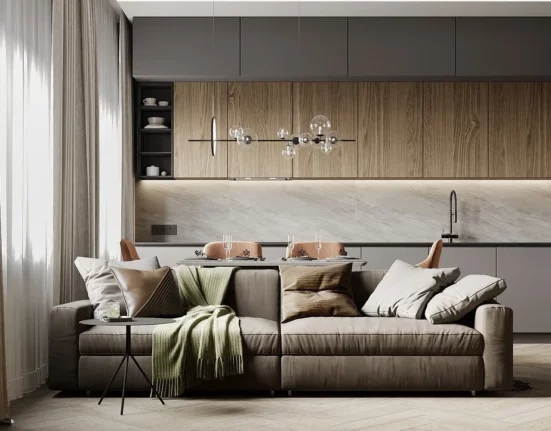
Leave feedback about this